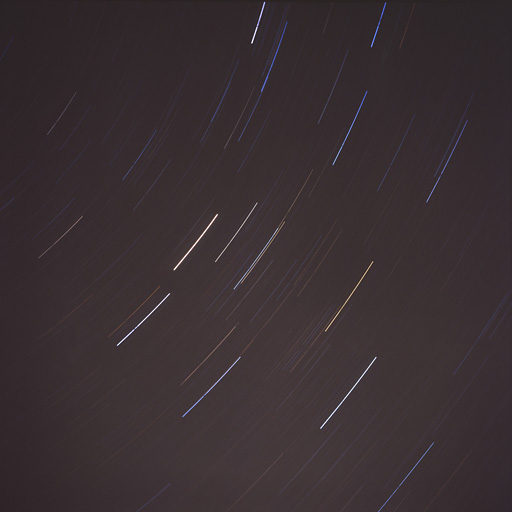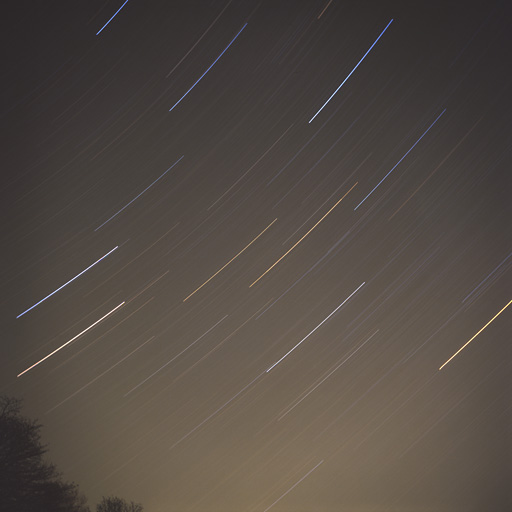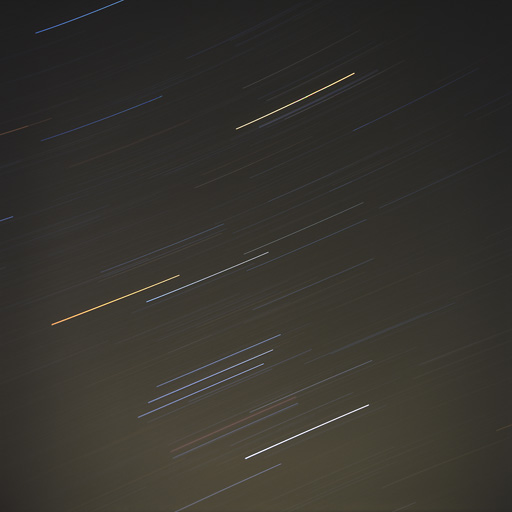|
When we first arrived at Woodland Waters the sky was partly
covered with thin cloud. In the clear patches it was obvious that
it was a good night because, even as soon as I'd turned up, and
with no dark adaption having happened, I could clearly see
the Milky Way.
I set the Antares 905 up and left it to
cool down while we waited for the sky to clear. It took around 45
minutes but, eventually, it turned into a really nice evening.
|
|
Once the sky had cleared nicely I set the
Lomo Lubitel 166B up on a tripod and
pointed it in the general direction of Auriga. It was
loaded with Fuji Provia 100F (120 roll film), the aperture was set
to f8.
|
|
While I was setting up the Lubitel John had, while looking for
something else, stumbled on what appeared to be an open
cluster in Perseus. Using the 32mm
eyepiece located it with
my 905. Checking the position on a chart we
worked out that it was NGC 1528.
The view was very nice. A small and tight collection of stars that
stood out really well against the background. Next I switched to
the 6mm eyepiece but the view was nowhere
near as impressive, I suspect I was pushing the 905 past its limit
in this case. Next I switched over to the 15mm
eyepiece and the view was much better. The overall
impression I got was that the shape of the cluster was something
like a very wide arrow head.
|
|
Stopped the star trail I'd
started
earlier. Here's the resulting image:

|
|
Started a new star trail with the Lomo Lubitel
166B, this time trying to capture Gemini
rising above some trees. Fuji Provia 100F with an aperture of f8.
|
|
John saw a very bright meteor head roughly from the
general direction of Ursa Major, head
between Cygnus and the zenith, and head towards the
horizon. Sadly I wasn't looking at the sky at the time. However, I
did happen to be looking towards the ground and at exactly the
same moment he shouted it out I saw a very brief flash on the
ground.
|
|
Decided to see if we could locate NGC 2392, also known as
the Eskimo Nebula. I started with
the 15mm eyepiece in
the 905.
Got the 'scope pointing in the right place and, pretty soon, was
wondering if I'd found it. Towards the end of a curved line of
stars I could see a faint star that, with averted
vision, appeared to be a little bit fuzzy. No other star
in the area gave this impression.
I spent a little more time looking around the general area and
couldn't find a better candidate. Going back to the area mentioned
above I could still see the "fuzzy with averted vision" effect.
However, I just couldn't be sure. Using higher power didn't help
at all.
Checking later with a copy of Starry Night I can see that I
didn't manage to locate the Eskimo Nebula. The "curved line" of
stars that I'd been looking around comprised
of TYC1372-1262-1, TYC1372-1306-1,
HIP36307, 63 Geminorum
and HIP36152.
|
|
Stopped the star trail I'd
started
earlier. Here is the resulting image:

|
|
Started a new star trail with the Lomo Lubitel
166B, this time trying to capture Orion.
Fuji Provia 100F with an aperture of f8.
|
|
While I'd been sorting out the previous star trail John had also
been looking for the NGC 2392. He had found an object that,
while small and star-like, also looked a little fuzzy even with
direct vision. This object was, however, in a slightly different
location to where I'd been looking (pretty much the same position
overall, just off a little).
There was no question that what he'd found looked like a
small planetary nebula so I made a very rough
sketch of the nearby stars and the location of the object so I
could check at home.
Checking later with a copy of Starry Night I can see that,
without a doubt, we'd been looking at NGC 2392.
|
|
Although I've observed it many times before I couldn't resist
having another look at M42. First using
the 6mm eyepiece in
the 905 I was surprised at how much detail
was visible. The dark lanes and "knotty" appearance in parts
really stood out well. The trapezium could also be seen very
clearly (probably the most clear view I've ever had of it). The
slightly blue/green colour of the nebula was also very obvious.
Despite the fact that I wasn't using the better of my two 'scopes
this was probably the best view yet that I've had
of M42 and this probably says a lot about how
good the air was.
|
|
Stopped the star trail I'd
started
earlier. Here is the resulting image:

|
|
For some time we'd noticed cloud increasing from the west.
By 23:34 UT it had started to cover a fair
bit of the western sky and, by 23:50 UT it had
reached the zenith. Given that it was obviously going to obscure
the whole sky pretty soon we decided to call an end to the session
and pack up.
|


